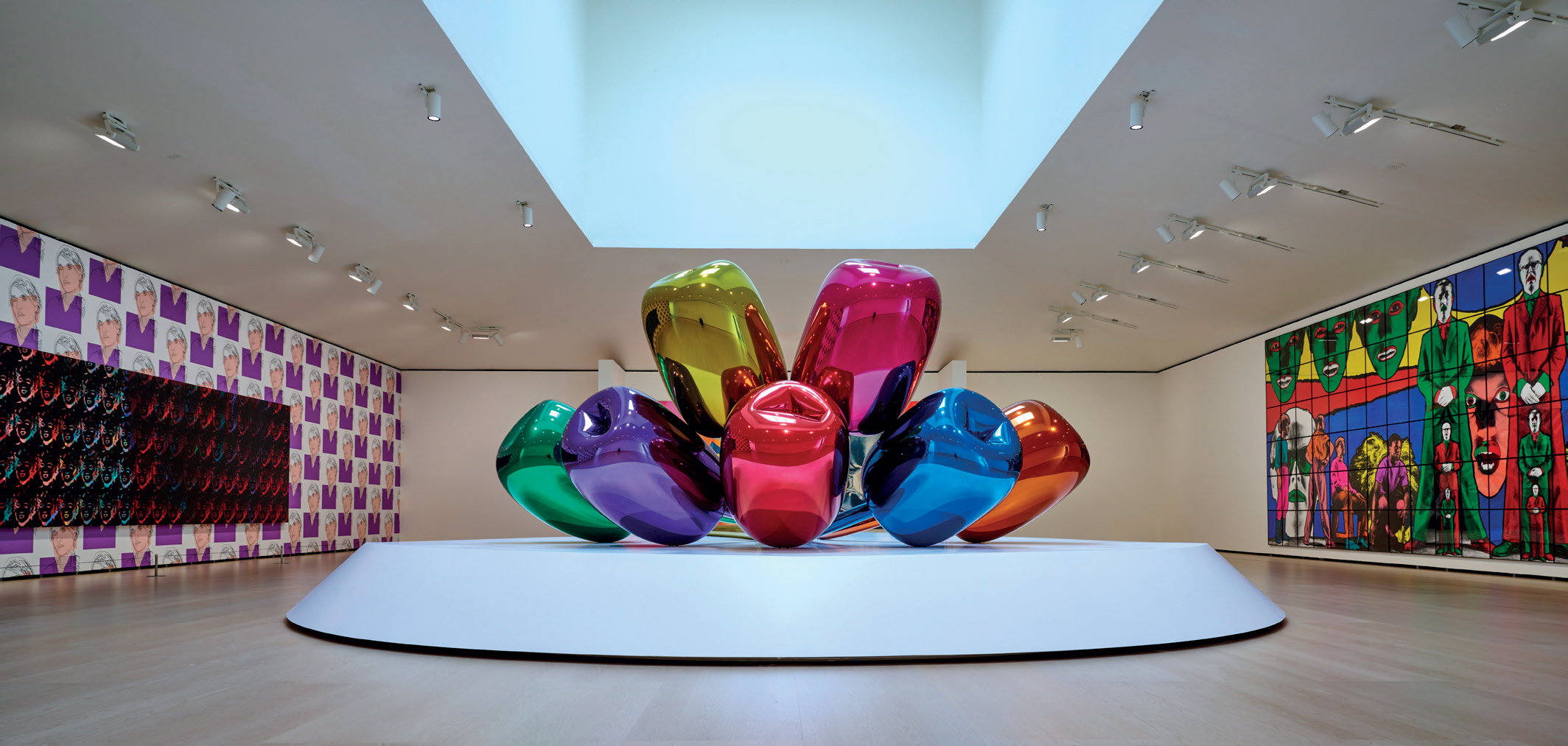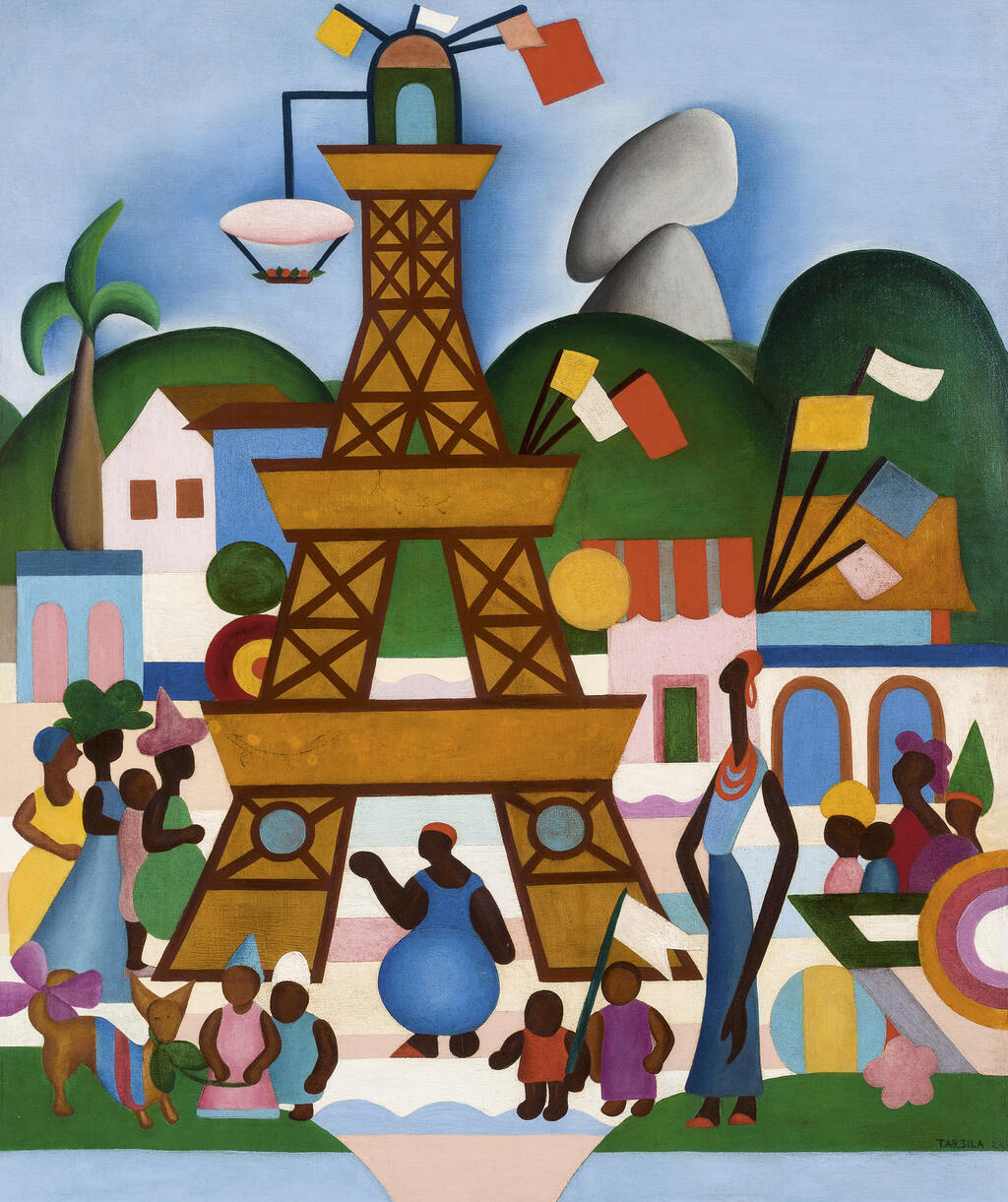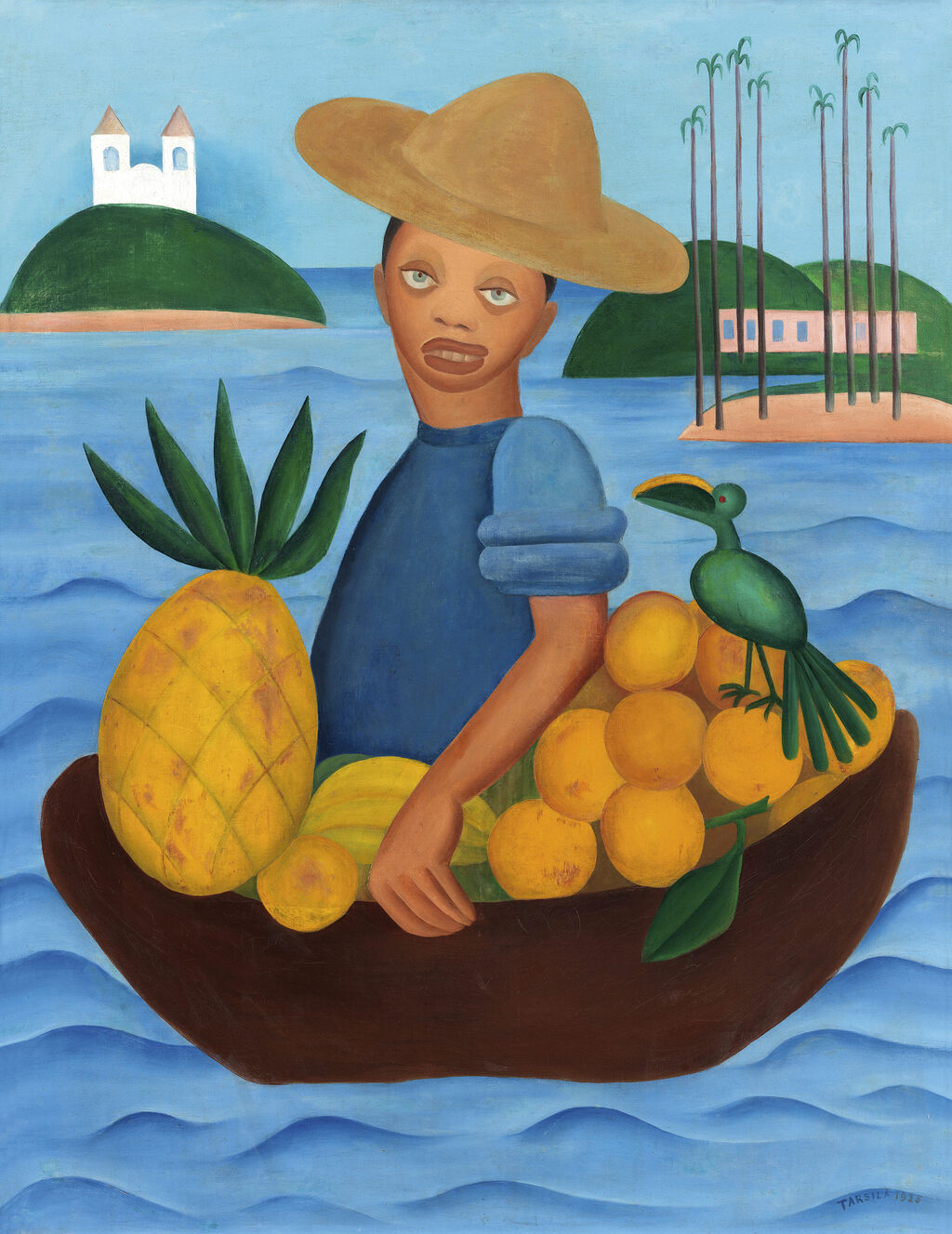Primitivism and Identity(ies)
Even when depicting characters, Tarsila faced up to a dual challenge: to respond to the demand for exoticism from Paris and to participate in the construction of a modern, national imagery based on the combination of indigenous, Portuguese, and African cultures that make up the people of Brazil.
The precolonial traditions were the focus of her research, while afro-descendent personages also appear in numerous paintings from 1924 and 1925, when Tarsila illustrated Oswald de Andrade’s Pau Brasil collection of poems and joined the eponymous artistic movement. Idyllic scenes of favelas (shanty towns) and the Carnival, together with the lively colors that the artist called “popular,” illustrate the search for an indigenous primitivism that is idealized by a white, cosmopolitan intellectual like Tarsila. Devoid of any trace of social inequality and colonial violence, these paintings do not hide the ambiguity of these appropriations or the complexity of the identitarian and racial issues of a Brazil that, 100 years after its independence and 37 years after the end of slavery, was far from reaching that ideal harmony that the artist expressed in her work.


